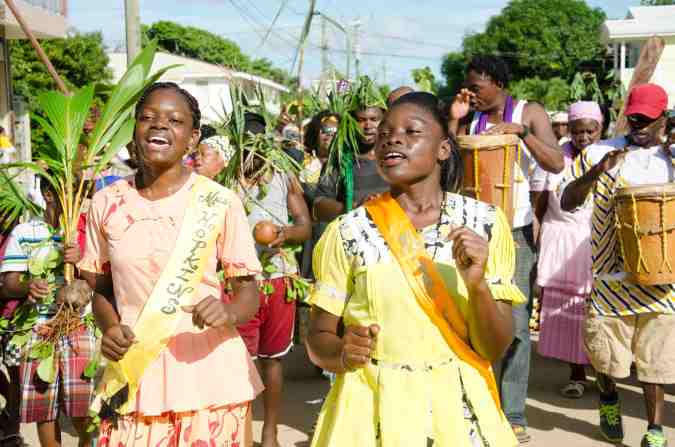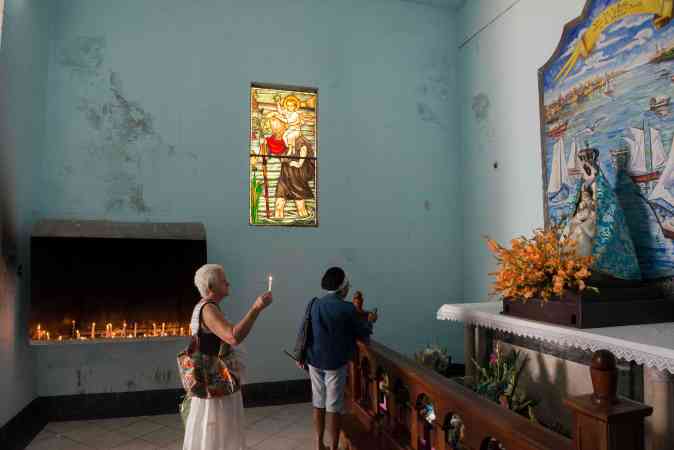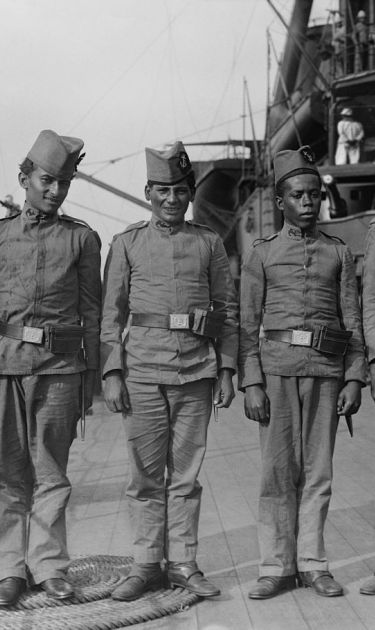When 22-year-old Cristian Casanova signed up for ANT 383 – Studies in Selected Cultures: Afro-Latin America – at Illinois State University, he was just looking to fill an anthropology requirement. But after reading an article about the course, Casanova – who was born in Argentina to Peruvian and Bolivian parents – felt intrigued. He reached out to the professor, Kathryn Sampeck, and learned that the class would delve into the history of the African Diaspora in Latin America. So he signed up.
“Before, I took this class… I always identified [myself] based on my national identity,” Casanova told Remezcla in a phone interview. “But when it came to my [racial] origins, I never really [thought] about it.” Now, he wants to learn more about his background.

In recent years, the push for Afro-Latino representation has become a more prominent subject in conversations about diversity and inclusion in Latino media. Nonetheless, both within and outside of the Latino community, the history of the African diaspora in Latin America is a poorly understood and neglected part of the region’s heritage – and one that occupies little real estate in academia.
“To imagine Latin America without Afro-Latin American contributions to culture and history … it’s almost unthinkable.”
Sampeck is part of a small but dedicated group of scholars pushing to highlight the role people of African descent have played (and continue to play) in Latin American history. Her class – which met two times a week – kicked off on January 18 with a month-long exploration of the history of slavery in Latin America. While the United States is very often centered in conversations on the American slave trade, less than 4 percent of the 10 million slaves that reached the Western Hemisphere wound up there – Latin America received 25 times the number of slaves that the United States did.
As outlined in the syllabus, the 16-week course also touched on mestizaje, which focuses on indigenous and European ancestries and often excludes Latin America’s African presence; the role Black soldiers played in several countries’ independence; music and diasporic identity; and Afro Latino identity today. Though it looked at all of Latin America, there was a specific focus on Cuba, Brazil, Central America, Peru, and Mexico.
“[The course looks at] ideas of race and what slavery even was and how all of that sort of came together with the colonization of the Americas,” Sampeck, an Anthropology Associate Professor at Illinois State, told Remezcla before the course began. “So [from] the very first possible inception of Afro-Latin America and then across the 16, 17, 18th century into developing racial ideologies and all of these different diverse roles that Afro dissonance played in different parts of Latin America. And of course, my perspective too is I’m bringing archaeology into it, as well as the arts and all these different ways to learn about it. I hope the students will get the richness of that history. To imagine Latin America without Afro-Latin American contributions to culture and history … it’s almost unthinkable.”
Sampeck, who has worked as an archaeologist for almost two decades, has explored the African Diaspora’s contributions in western El Salvador. Some of her work as a fellow for Harvard’s David Rockefeller Center for Latin American Studies and the Afro-Latin American Research Institute connected her to scholars focusing on Afro-Latin American studies, which inspired her to teach the anthropology course.

But as someone who is not of the culture, Sampeck – who started the Afro-Latin American Archaeological Consortium – knew she had to handle the material with respect. “I think that’s the dilemma of many anthropologists,” she said. “I think the most important way that I deal with that is that I bring in as much as I can of Afro-Latin American voices themselves, whether it’s in music or in art or in different sorts of works. Students then get a chance to engage directly with Afro-Latin Americans and their work and their creativity.”
Centering Afro-Latin American voices is especially important in an area that’s small but growing. The emergence of Latino and Black Studies in the United States began similarly. In the late 1960s – in the midst of the Civil Rights movement – student activists looking for a way to connect with their cultures, fought for the creation of Latino and Black Studies. From 1968 to 1969 at San Francisco State University, for example, the Black Student Union and coalition of students of different races and ethnic backgrounds known as the Third World Liberation Front staged protests for five months. “We wanted to see this campus become more of the communities that we were from, bottom line,” former protester Roger Alvarado told ABC 7.
“[These courses] still fairly rare, in part because they’re stuck between Africana and Latin American studies.”
The students had a list of 15 demands, which included the hiring of more professors of color. The series of protests led to the establishment of the College of Ethnic Studies, which included Black, Asian, Chicano, and Native Studies. And while these students helped pave the way for Black and Latino studies across the country, there hasn’t always been a place for Afro-Latin American studies.
“I think these courses are not unheard of, but are still fairly rare, in part because they’re stuck between Africana and Latin American Studies” said Michael Birenbaum Quintero, an assistant professor of musicology and ethnomusicology, Latin American Studies, and African American Studies at Boston University. “But I do know of some professors who offer classes – including myself – and even a few places that have more developed institutional spaces.”
Birenbaum Quintero specifically credits UMass Amherst Associate Professor Agustin Lao-Montes, Harvard’s Afro-Latin American Research Institute – which launched in 2013 – and the City College of New York’s Dominican Studies Institute for bringing visibility to Afro-Latin American studies. “Increasingly, there are more people who work with Afro-Latin American topics,” Birenbaum Quintero said, adding that he hopes this translates into more courses about this subject.
For Cristian Casanova – who Sampeck described as one of her most engaged pupils – the class was eye-opening. Learning about how Afro-Latin Americas have made their mark on every part of the region has motivated him to learn more about this history. For his final paper, he decided to look past his native country and instead focused on the contributions of Afro-Paraguayans. “I wanted to see other countries and cultures besides my own, so I took a bigger interest in Paraguay,” he added. “[I found] there’s very little research, very little talk – only up until recently, which is about [the last] five to 10 years.”
Despite the challenges to find information on this group, he’s in a position where he’s able to turn to scholarly texts to learn more about Afro-Latin American culture. For many, this kind of information is inaccessible because it remains locked behind institutions of higher education. But books are an easier way to explore these issues. With the help of Sampeck and Birenbaum Quintero, we’ve compiled a list of books that will get you started.
- George Reid Andrews’ Afro-Latin America, 1800-2000
- Miriam Jiménez Romand and Juan Flores’ The Afro-Latin@ Reader: History and Culture in the United States
- Lowell Gudmundson and Justin Wolfe’s Blacks and Blackness in Central America: Between Race and Place
- Piri Thomas’ Down These Mean Streets
- Russell Lohse’s Africans into Creole: Slavery, Ethnicity, and Identity in Colonial Costa Rica
- Tianna S. Paschel’s Becoming Black Political Subjects: Movements and Ethno-Racial Rights in Colombia and Brazil
- Paulette Ramsay’s Afro-Mexican Constructions of Diaspora, Gender, Identity and Nation
- Ginetta E. B. Candelario’s Black Behind the Ears: Dominican Racial Identity from Museums to Beauty Shops
- Theresa Singleton’s Slavery Behind the Wall: An Archaeology of a Cuban Coffee Plantation
- Lorgia García-Peña’s The Borders of Dominicanidad: Race, Nation and Archives of Contradiction
- Marc D. Perry’s Negro Soy Yo: Hip Hop and Raced Citizenship in Neoliberal Cuba




